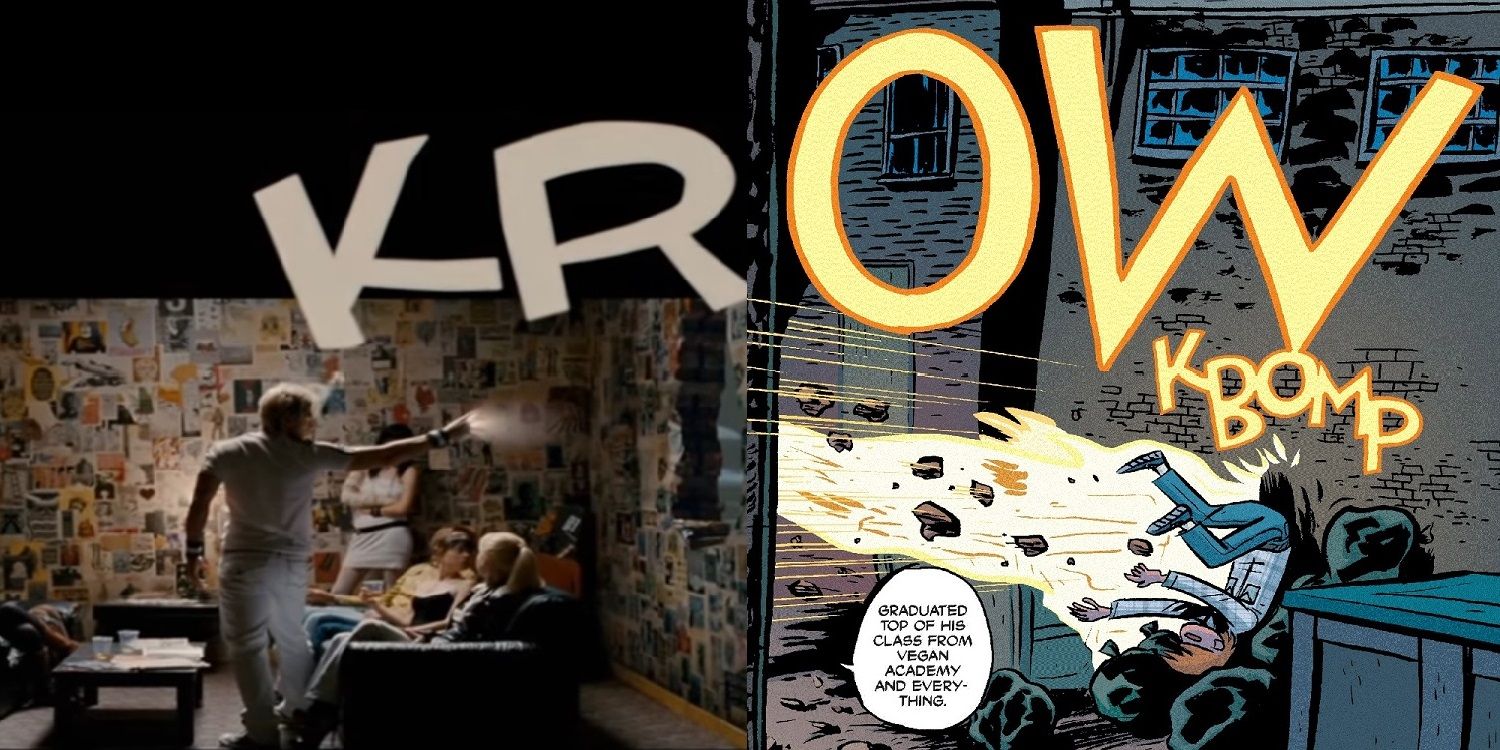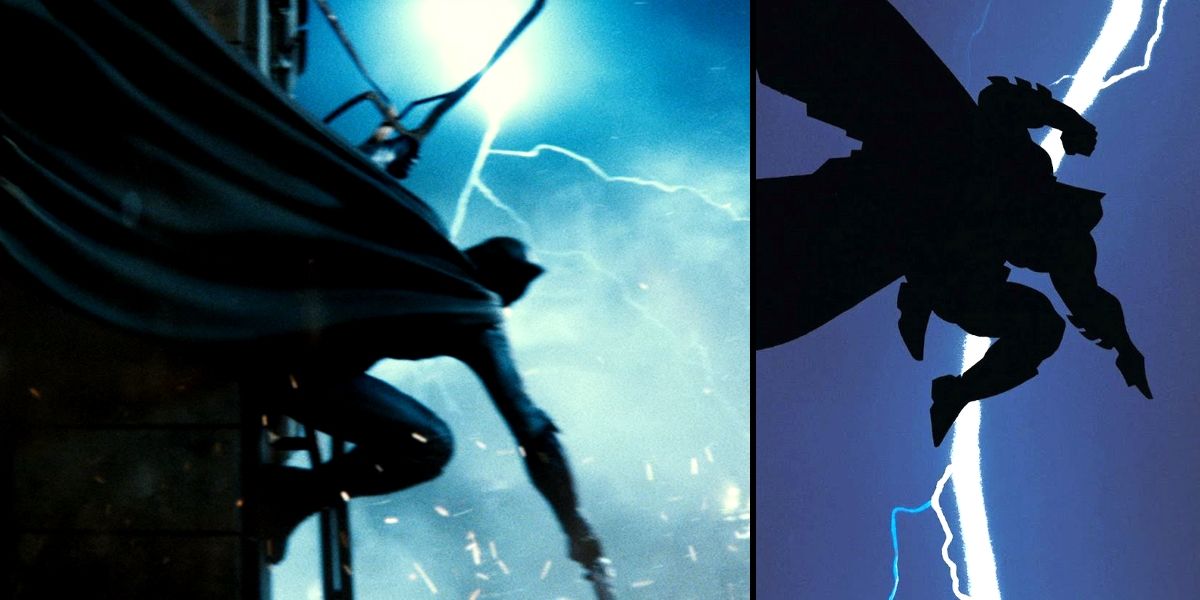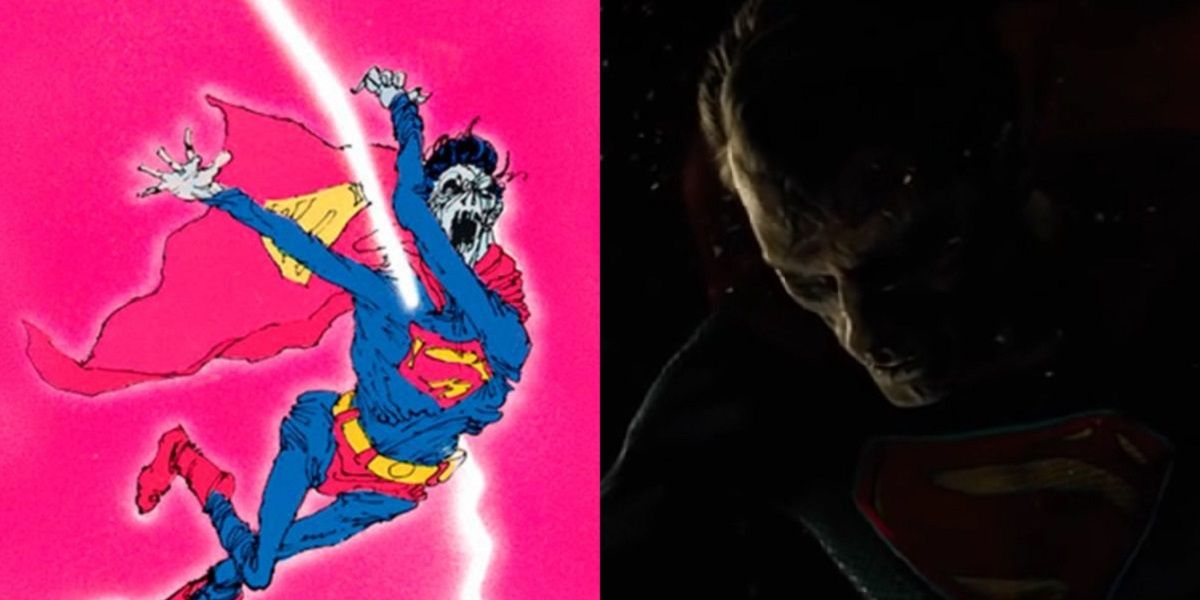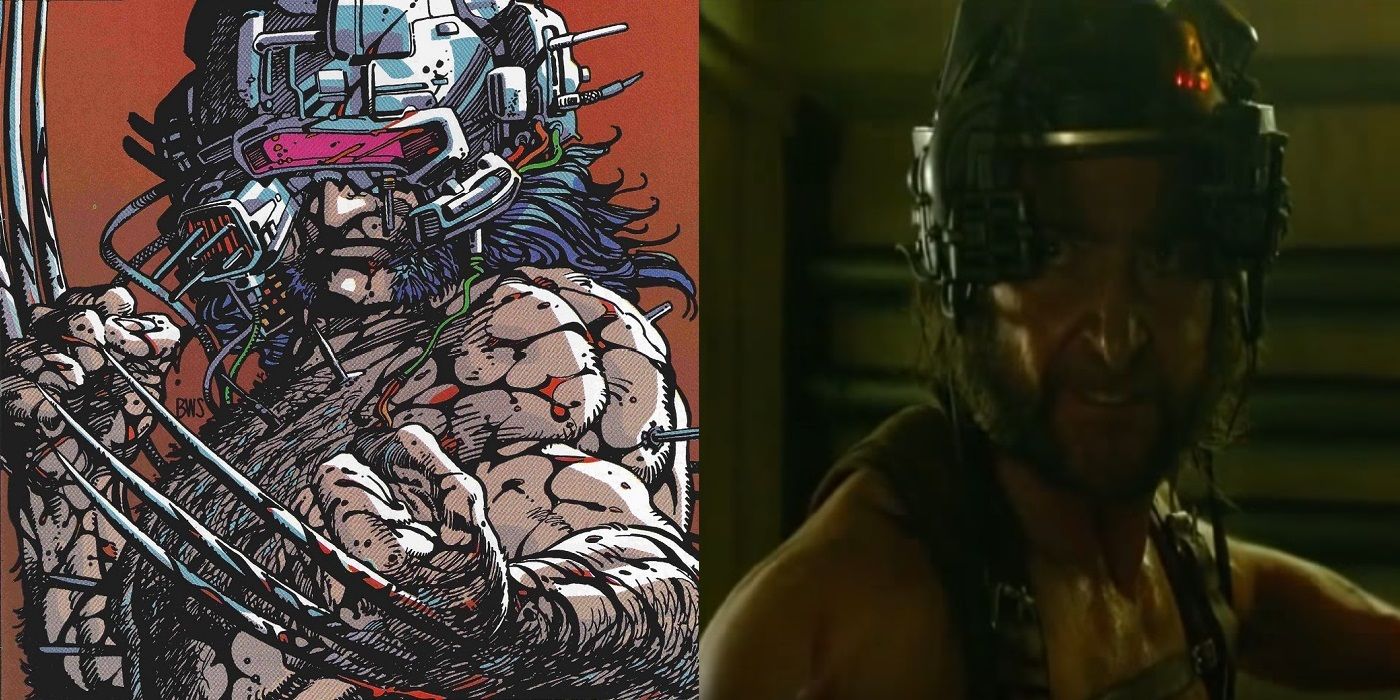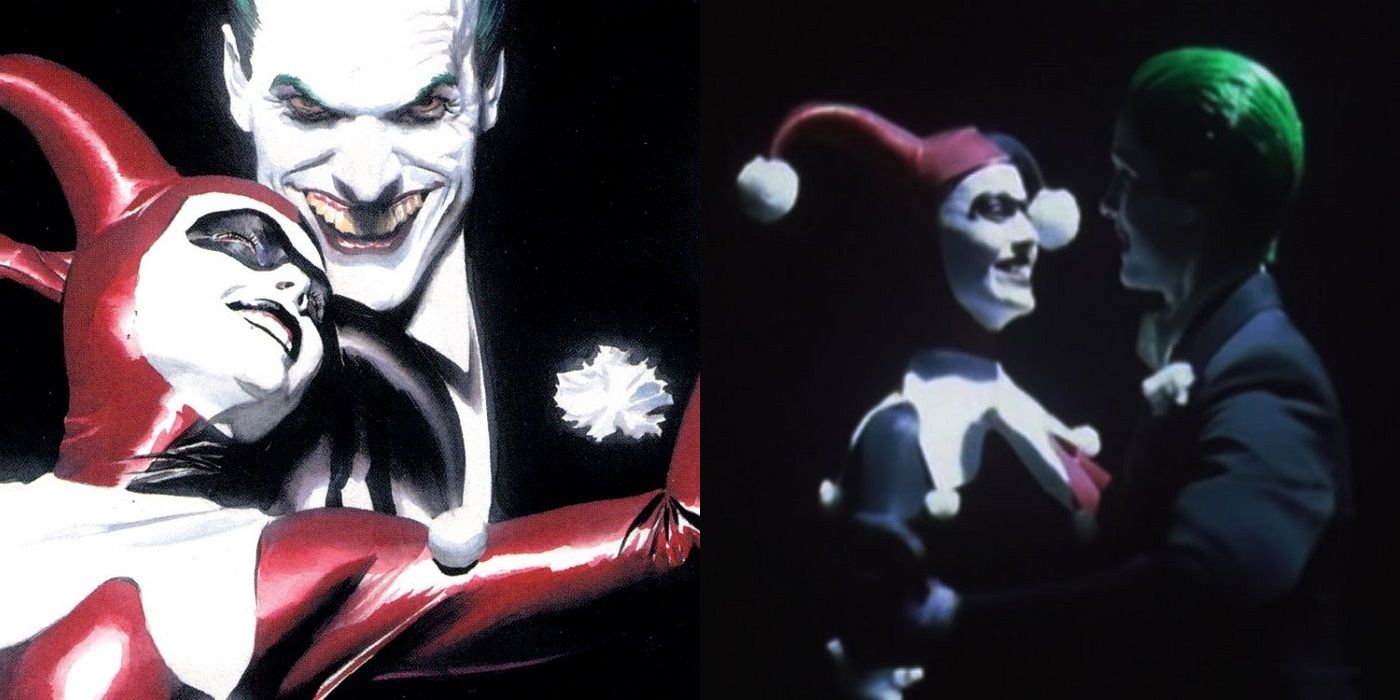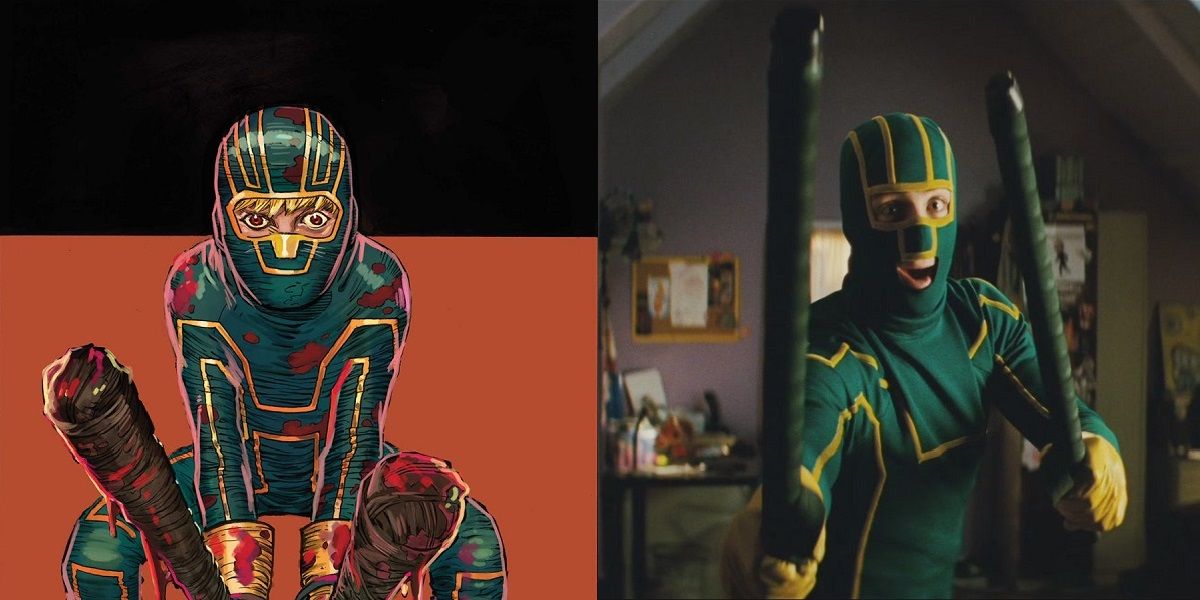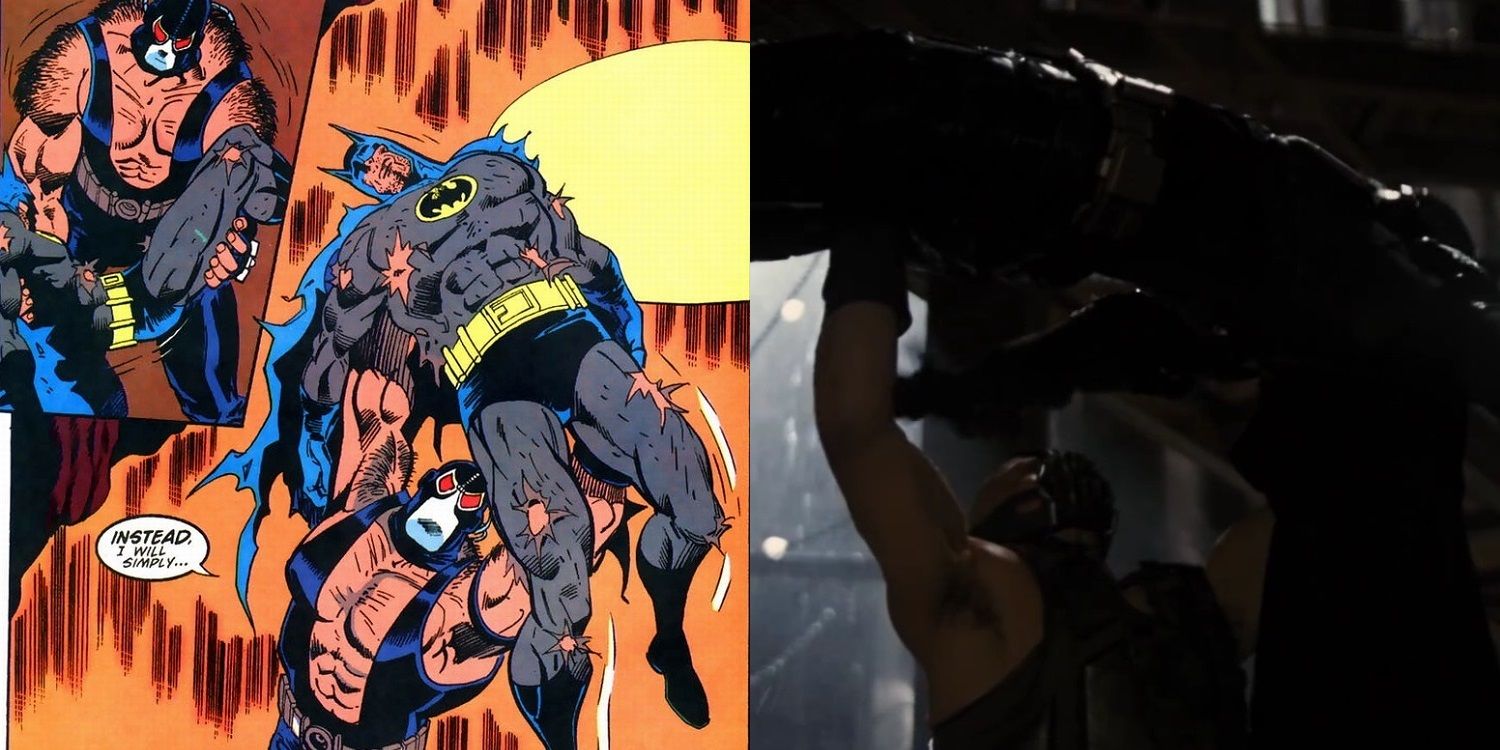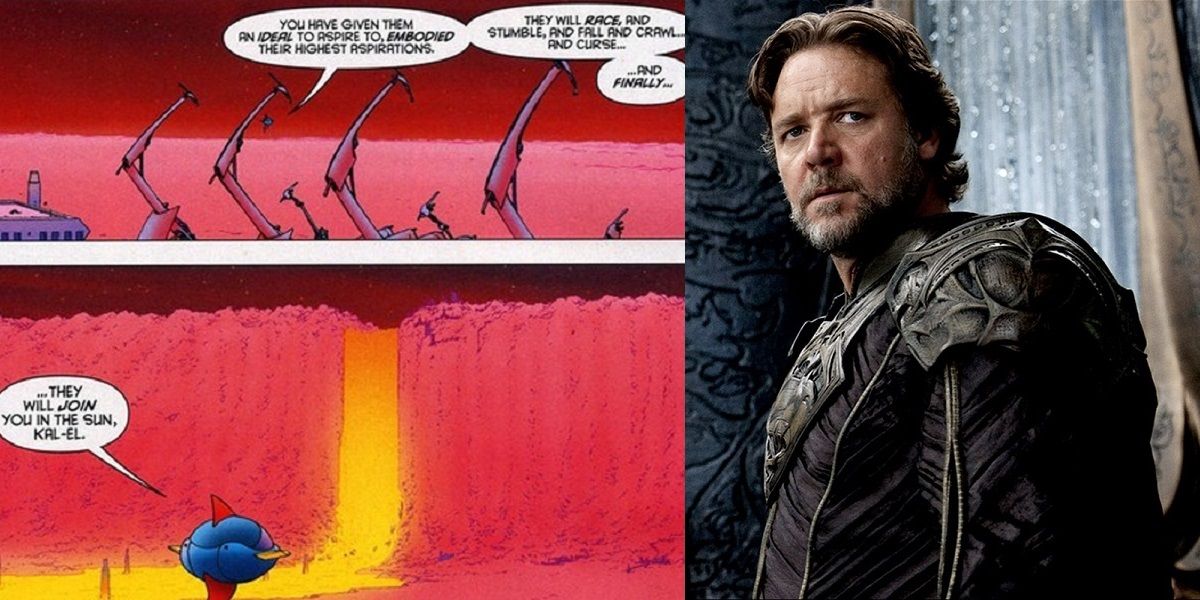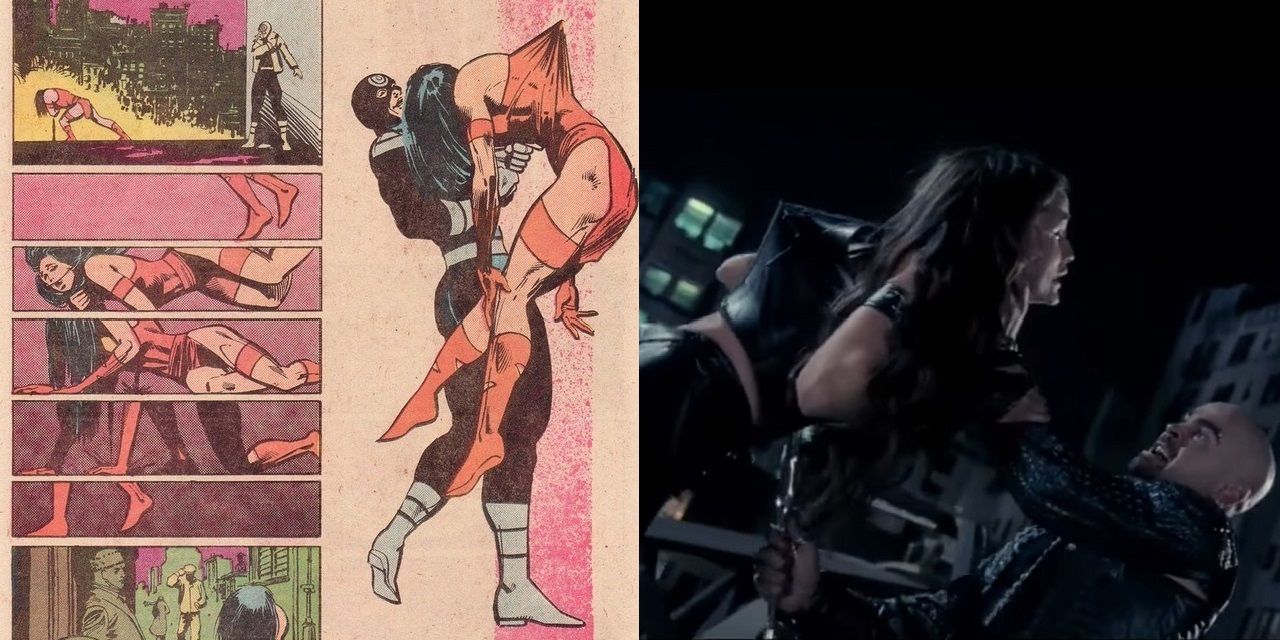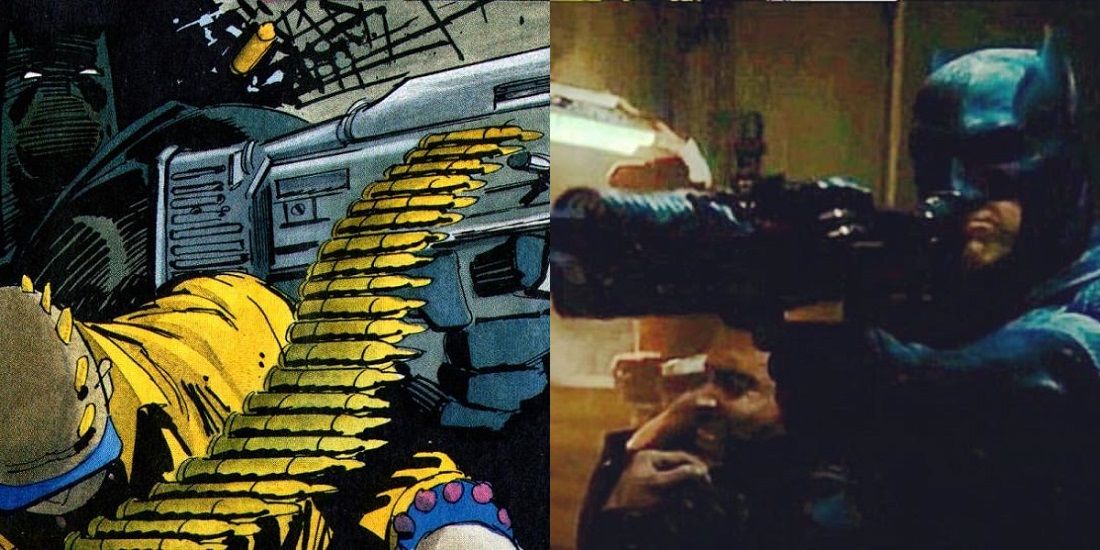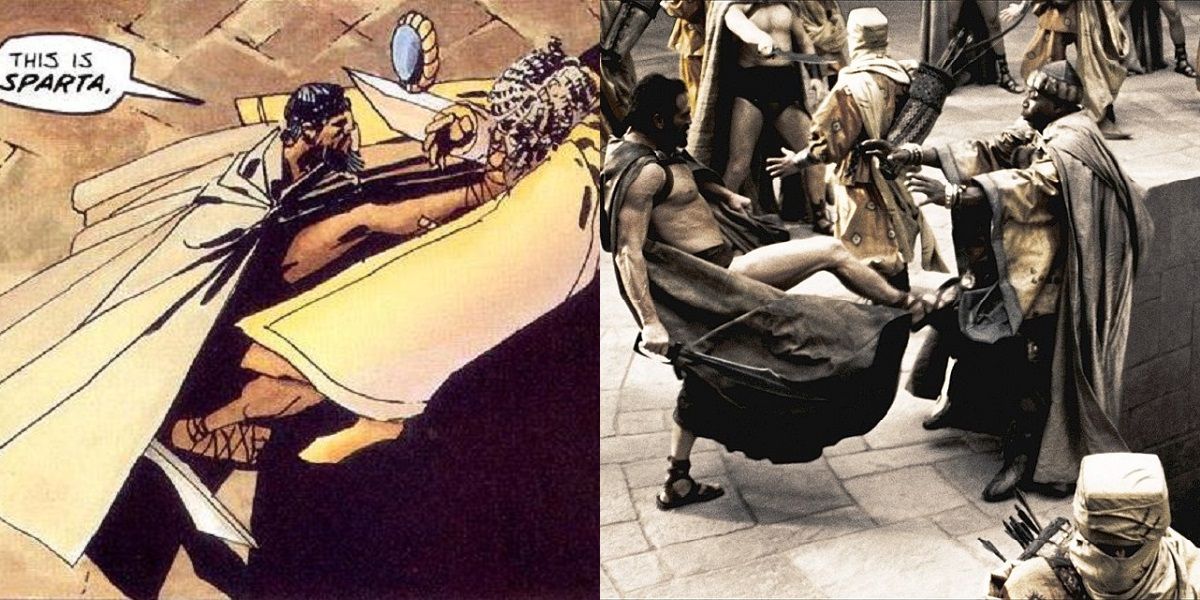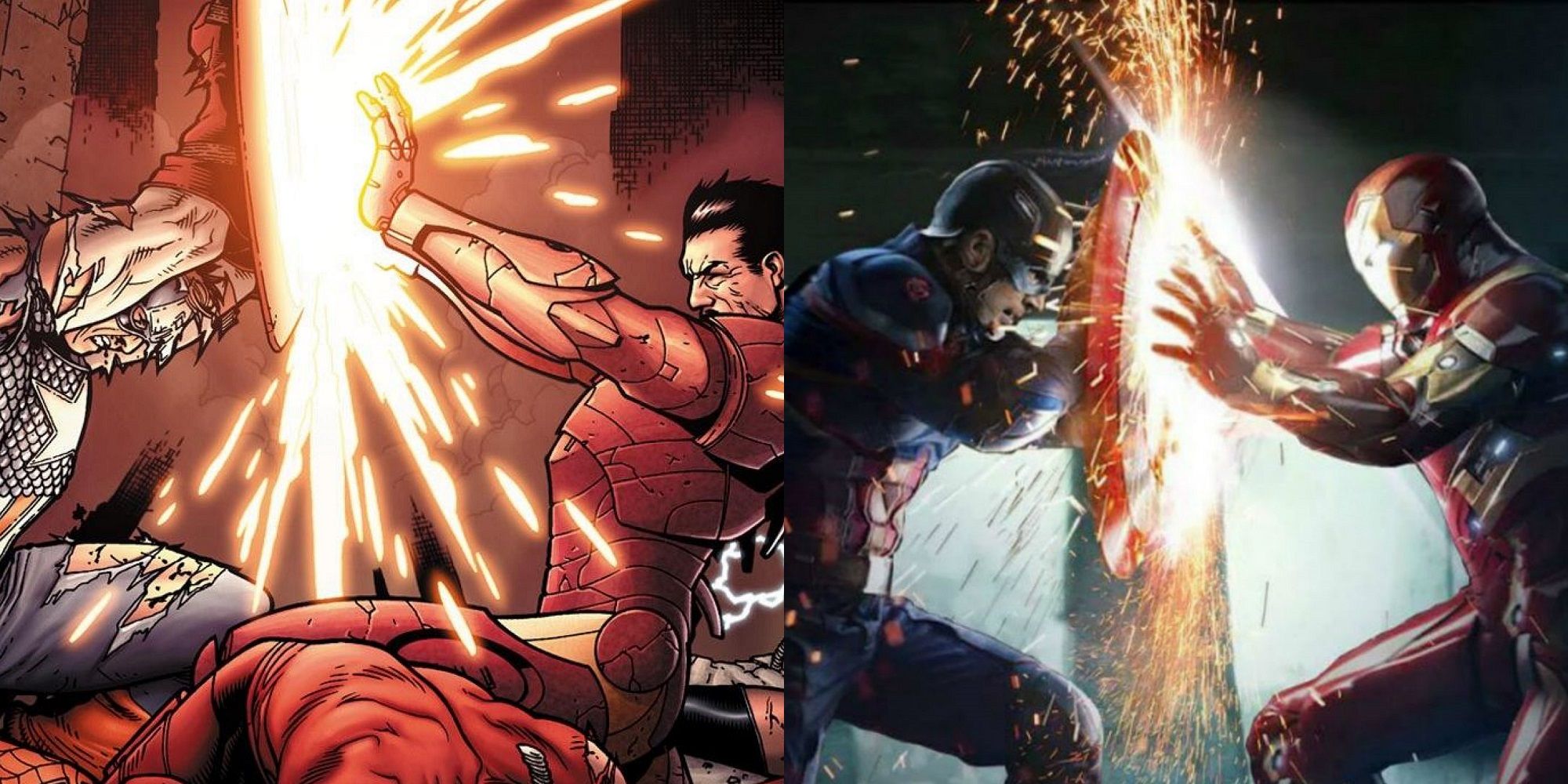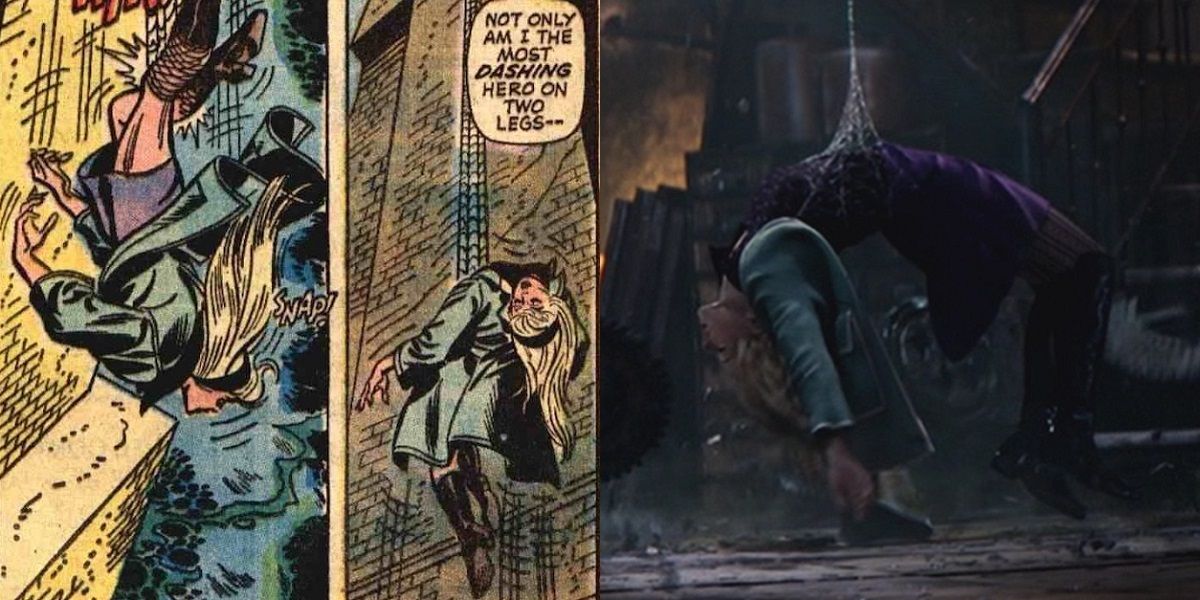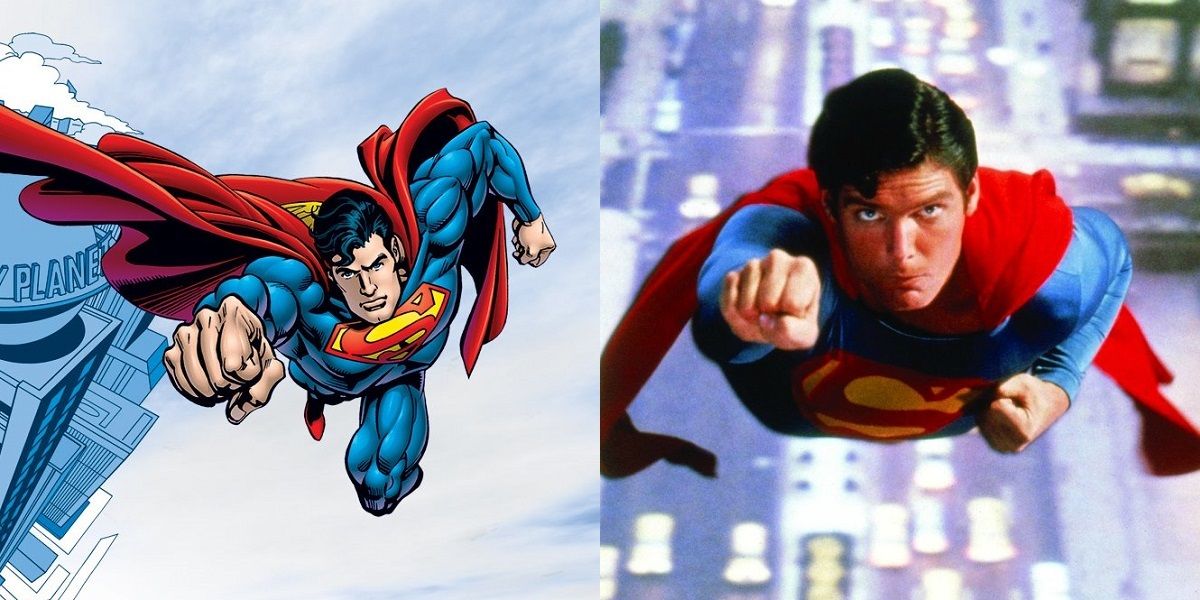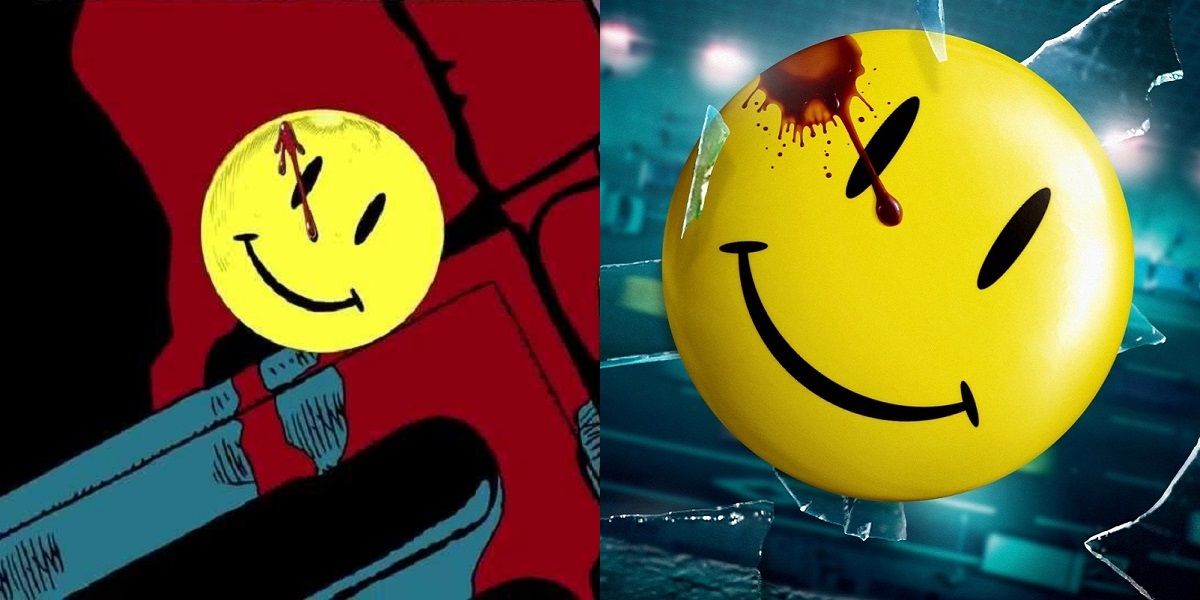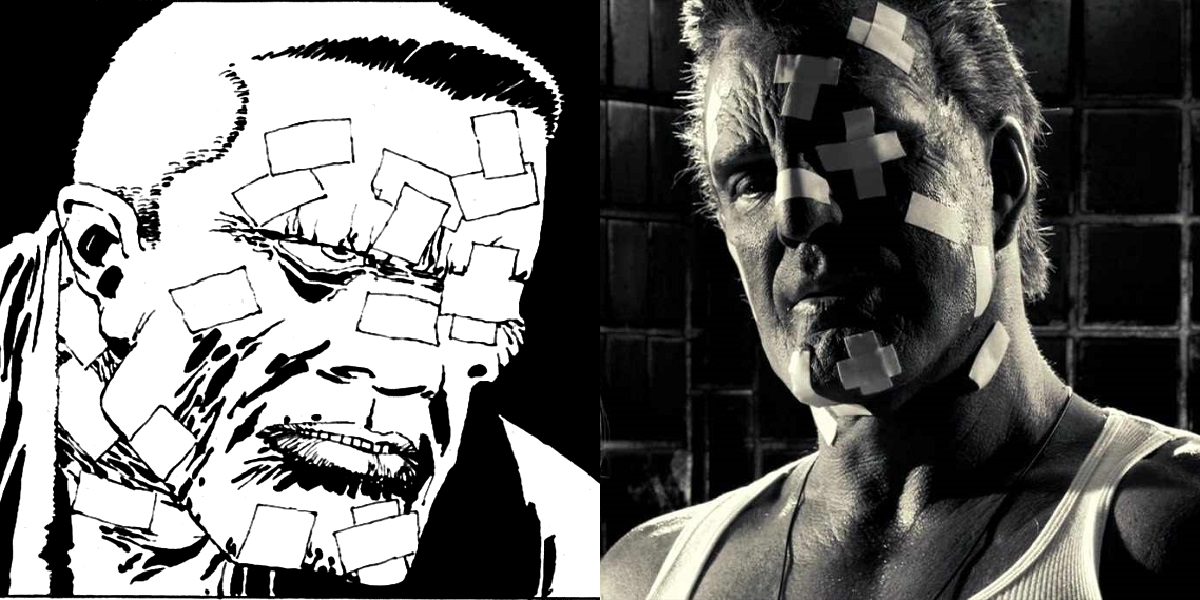Superman first took flight in 1938, and from that moment, the film industry was eager to adapt his adventures, as well as those of the countless heroes he inspired. Across radio, television, animation, feature films, and video games, classic comics have crawled out of the page and become some of the biggest Hollywood blockbusters of all time. 2001's X-Men arguably started the current boom, with Spider-Man, released the following year, becoming one of the biggest pictures of all time soon afterwards.
Comic book movies must walk a fine line, telling stories for film while remaining true to the original comics which inspired them. Many comics feature iconic moments which are gloriously remade for the film adaptation. For this list, we're going to take a look at comic book scenes, images, and dialogue which made the leap from the pages of comics to the glitz of the silver screen. Here are 15 Classic Comic Comic Book Scenes That Were Recreated On Film.
15. Superman Getting Nuked In Batman v Superman
One of the most popular graphic novels ever made is The Dark Knight Returns, Frank Miller's two-fisted tale of a 55-year-old Bruce Wayne coming out of retirement to save his city once again. Eventually, his crusade brings him into direct conflict with Superman, who, in this story, is reduced to being little more than a puppet of the American president (who just so happens to look and act an awful lot like former real life US President Ronald Reagan).
In The Dark Knight Returns, before he can fight against Bats, Superman takes on Soviet forces in the South American island nation of Corto Maltese. The Soviets attack with a "Coldbringer" nuclear missile, which knocks out all electronics in the western hemisphere, as well as completely knocking all the life from the Man of Steel. He's not dead, but his nearly-lifeless body floats in space like a mutilated husk of its former greatness. Likewise, in Batman v Superman: Dawn of Justice, Superman is nearly killed by a nuke while fighting against Doomsday. This time, instead of being launched by Soviet Russians, the nuke (just a regular nuke this time, as there's no evidence of electronic disruption over Gotham or Metropolis) is sent by a trigger-happy American military, who are overly eager to take out Doomsday, even at the cost of America's greatest hero. The resulting image, of Henry Cavill's Superman floating in space like a zombie corpse, is downright haunting.
14. Wolverine in X-Men: Apocalypse
Hugh Jackman's version of Wolverine may be a handsome hunk compared to his more homely comic book counterpart, but when it comes to the characters inner (and outer) anger, not to mention his fury-fueled rampages. Jackman embodies everything which fans love about the character.
While X-Men Origins: Wolverine may have been something of a letdown for fans of the character and franchise, a truncated version of his origin story appeared in 2016's X-Men: Apocalypse. In his brief-but-memorable cameo, Wolverine slices and dices his way through a legion of soldiers, all while wearing a ridiculous mechanical apparatus strapped to his head. It's a testament to Hugh Jackman's ability to tap into the character's feral nature that the scene works as well as it does, even with the aforementioned helmet and snicker-inducing pants. Plus, Bryan Singer is able to incorporate shameless fan service into the movie without bringing the whole thing to a screeching halt, which is an accomplishment in and of itself!
13. Suicide Squad Imagery
Suicide Squad, like its forebearers in the DC Cinematic Universe, was met with a polarizing reception, where general audiences were far more receptive than critics. Critics complained about the lackluster story and thinly-developed characters, while fans loved how the visuals were authentic to the comics.
The film features numerous flashbacks and visions, particularly with Harley Quinn and The Joker. One in particular stands out for being something of a non-sequitur visual moment; it's only onscreen for a few seconds, but Harley and her "puddin'" stand in a pose familiar to longtime fans of the character. It's a complete recreation of the cover of the Batman: Harley Quinn one shot, complete with Harley's classic "jester" costume and black background. There's an argument to be made that, due to its flashback-heavy structure, the film doesn't earn these moments of fan service, and that it merely squeezes in iconic images without making them integral to the story, but that's an debate for another time.
12. Scott Pilgrim Vs The World Battles
Scott Pilgrim Vs The World was underappreciated upon release, bombing at the box office. Despite this, it went on to become a cult classic and is widely seen as one of Edgar Wright's most beloved works. Based on the series of graphic novels by Bryan Lee O'Malley, the books and the movie follow the young and aimless Scott as he embarks on a quest to win the love of Ramona Flowers by engaging in to-the-death combat with each of her seven evil exes.
The fights themselves are rife with imagery from comics, movies, and video games, and many of the panels from the books are translated beautifully to the screen. While liberties are taken and some things are switched around or replaced (some of the imagery pulls from a story O'Malley wrote for Free Comic Book Day), many of the fight scenes are true to the original art, which pairs beautifully with Edgar Wright's visual style.
11. Kick-Ass Imagery
Before he made Kingsmen: The Secret Service, Matthew Vaughn directed a film adaptation of a different Mark Millar comic, Kick-Ass. While the comic is a savage deconstruction of vigilante superhero mythology, set in a cynically believable world, the movie retains the gritty setting while making the heroic characters much more virtuous and righteous in their goals and motivations.
Despite the myriad changes to the source material, many elements are kept mostly intact. Some scenes start the same way in both versions, but diverge due to the differences in characterization, like the scene where Kick-Ass's alter ego, Dave Lizewski, tries to reveal his true identity to his crush, Katie. He fares much more strongly in the movie than the comic, to say the least. One of the most brutal scenes in both versions is when Kick-Ass is tied to a chair and beaten, live on the internet, though the extent of his torture is slightly less severe in the movie. Then, of course, there's the early scene in which he first gets his suit in the mail. Unlike Big Daddy, Hit-Girl, and Red Mist, Kick-Ass's outfit in the film is practically identical to the comic book version, and the scene of Kick-Ass practicing silly fight moves in the mirror is very similar in both versions.
10. Bane Breaking Batman's Back
Christopher Nolan's trilogy of Batman films earned significant praise for adapting the Caped Crusader's comic book rogues gallery into a fully believable world, creating startlingly realistic characters and situations out of fantastical imagery. The third and final film, The Dark Knight Rises, took the most liberties with its villain, Bane. In one of the most heinous cases of bad guy whitewashing this side of Benedict Cumberbatch as Khan, Bane is no longer hispanic, but played by the glaringly caucasian Tom Hardy. Bane no longer depends on the Venom formula for his strength, and is associated with the League of Shadows, which was an original development for the film.
However, one aspect the filmmakers got absolutely right was in the first hand-to-hand battle between the hero and his villain. In the comics, Bane is famous for breaking Batman's back in the Knightfall story arc, and that act is repeated in the film. After besting him in combat, Bane lifts Batman over his head, and drops him down onto his knee, practically snapping Gotham's Dark Knight in half.
9. Russell Crowe Quotes All-Star Superman
The first film in the DC Expanded Universe canon, Man of Steel, when it was firing on all cylinders, was an old-timey biblical epic, and a competent remake of the first two Superman movies with Christopher Reeve, complete with a 21st century version of the fight against General Zod and his lieutenants in Metropolis.
On the other hand, the film received some harsh criticism for dwelling on its exciting, but endless, fight scenes, as well as a tastelessly high human body count and offensive appropriation of 9/11 imagery. The argument about the last 30 minutes aside, Man of Steel scored some major points with the fandom for its casting of Russell Crowe as Jor-El, as well as for taking inspiration from Grant Morrisson's All-Star Superman comic series. It's not a direct quote, but fans were moved to tears when they heard Jor-El paraphrase his comic book counterpart's dialogue, saying "They will stumble, they will fall. But, in time, they will join you in the sun."
8. Death of Elektra
The 2003 Daredevil movie isn't fondly remembered as a great piece of art. Even its superior Director's Cut pales in comparison to contemporaries like Sam Raimi's Spider-Man or Bryan Singer's first two X-Men films. Ben Affleck and Jennifer Garner are terribly miscast, the costuming is often silly, and the action is ruined by superfluous CGI moments. However, some of the imagery is striking, especially when it is lifted straight from famous comics.
After a fierce battle on the rooftops of Manhattan, Bullseye (Colin Farrell at his hammiest) stabs Elektra (Garner) with one of her own sai, recreating the iconic image from the infamous Daredevil #181. The legend goes that, back in 1982, knives and swords weren't allowed to be seen graphically sticking out of open wounds. To get around this, while still providing a shocking and visceral moment, Frank Miller showed a massive protrusion under the back of Elektra's shirt. This detail was recreated in the film, although the angles of the sai entering and exiting poor Elektra clearly do not match up.
7. Batman With A Machine Gun In BvS
Batman v Superman gets a lot of flak for its morbid tone, inconsistent characterization of Superman, staggering amount of unresolved plotlines, and bizarre fetishization of Jolly Rancher candies. However, to its credit, Ben Affleck's Batman manages to feel unique while also making generous use of imagery from Frank Miller's iconic The Dark Knight Returns. From the design of both Batsuits to the brutal brawl between Batman and Superman, Frank Miller's 1986 tome is probably the single biggest influence on BvS's visual language.
This article has already covered Superman taking a nuclear missile to the face and walking it off, but one of the other overt TDKR homages comes when Batman finds himself pointing a machine gun at a hostage taker. In the comic, the villain, a young woman, has a pistol pointed at a baby. In the movie, a mercenary has a flamethrower directed at Martha Kent. While the outcome of the standoff is different in both versions, the tension is palpable in both the comic and the movie. When the villain threatens to kill their hostage, Batman responds with the perfect tough guy line: "I believe you." *BANG*
6. This! Is! Sparta!
Zack Snyder's first full-length film was the 2004 remake of George Romero's Dawn of the Dead. While that flick was a decent hit at the box office, it was his next effort that really broke out and made the visually-inclined director one of the hottest names in Hollywood. 300 was based on the graphic novel by Frank Miller, the same writer behind The Dark Knight Returns, which of course would heavily influence Snyder's Batman v Superman.
300 was one of several films shot on a "digital backlot," which makes minimal use of practical sets, opting to instead shoot almost entirely with green screen techniques. This was done to better facilitate the recreation of moments from the comic, which interprets the real-life Battle of Thermopylae with more fantastical sensibilities. That iconic shot of Leonidas kicking the Persian messenger into a bottomless pit is taken straight from the comic. Throughout the film, the gratuitous use of slow motion is used to replicate the feel of seeing a comic book panel in all its glory.
5. Captain America Vs Iron Man
Captain America: Civil War is mostly an "in-name-only" adaptation of the 2006 Marvel Civil War crossover event. There is no Superhuman Registration Act, Spider-Man doesn't switch sides multiple times, and there is (thankfully) no robotic Thor clone who kills Goliath. The movie instead focuses on distilling the conflict to the philosophical rift between Captain America and Iron Man.
Naturally, their quarrel eventually escalates to a life-or-death battle, and it is here where the movie makes use of one of the comic's most iconic images. In the film, Tony Stark launches a laser from his hands, and Cap raises his shield to defend himself, almost perfectly replicating the cover of Civil War #7, in which the two characters strike an identical pose. It's a provocative image full of emotional weight and primal thrills. Even though the events leading up to the final showdown couldn't be more different in the comic versus the film, they both arrive at the same destination.
4. The Death of Gwen Stacy, Subverted in Spider-Man 2002
2002's Spider-Man remains one of the greatest superhero films of all time, alongside 1978's Superman, 2008's The Dark Knight, and 2012's The Avengers. These films were all major game-changers which inspired countless imitators in the years following their release.
One of the liberties the Sam Raimi-directed film took with the source material was completely bypassing Peter Parker's courtship of Gwen Stacy, opting instead to make Mary Jane Watson the primary romantic interest from the beginning. However, the first film paid magnificent homage to the infamous The Night Gwen Stacy Died comic in its climactic showdown. In the comic, Green Goblin drops Gwen off of the Brooklyn Bridge, and Spidey shoots a web to catch her. It snags on to her leg, but the sudden stop causes her neck to break. Spider-Man subsequently beats the tar out of Goblin, who then accidentally impales himself with his own glider after Spider-Man dives out of the way.
In the 2002 film, the situation is changed somewhat, with Goblin and Mary Jane on the Queensborough bridge, with a cable car full of innocent civilians thrown into the mix. Instead of shooting web at his lady friend, he instead dives after her, performing a spectacular mid-air catch, followed by the heroic rescue of the other innocents. From here, the battle with Goblin plays out similarly, complete with the accidental suicide of the villain.
Gwen Stacy died for real in 2014's Amazing Spider-Man 2, though the assailant was not Norman Osborne, but his son, Harry, and he dropped her from a great height inside a clocktower, rather than off of a bridge. Whatever the future of that story would have been, it's moot, as the character has been rebooted to fit into the Marvel Cinematic Universe, and most fans are happy to leave that so-called "Amazing" movieverse behind them.
3. Superman's Flight
These days, big-budget Hollywood blockbusters have all the magic of computer technology to bring impossible images to the screen, like The Incredible Hulk transforming, Spider-Man swinging around the city, or making surreal acid-trip sequences in Doctor Strange. Back in the old days, this wasn't the case.
He may be faster than a speeding bullet and more powerful than a locomotive, but Superman's most iconic trait is his ability to fly. Countless comic book pages depict the Man of Steel in flight, and the image has always been central to any depiction of the character on film. In the 1940s serials, Superman flew through the power of hand-drawn animation, always landing conveniently behind a rock or something from which Kirk Alyn could emerge. For close-ups, Kirk stood straight up, pointing his arms towards above him, and the camera was turned sideways.
For 1978's Superman film, getting the special effects right were a top priority for director Richard Donner and his crew. In fact, the film was even marketed with the fantastic tagline, "You'll Believe A Man Can Fly." The effects may look dated to 21st century eyes, but shots of Christopher Reeve flying through the air were veritable game-changers in their day.
2. Watchmen
Before Zack Snyder got his hands on Superman, but after he had broken out with 300, he tackled one of the most ambitious comic book adaptations ever attempted, Watchmen. Written by Alan Moore and first published in 1986, Watchmen was long considered to be unfilmable, and attempts to get a motion picture off the ground by directors like Terry Gilliam and Darren Aronofsky were all met with failure.
Zack Snyder's take on Watchmen proved divisive due to its strict adherence to its source material (lack of a giant alien squid notwithstanding). As such, many scenes, and the imagery therein, are direct translations of the original graphic novel. This steadfast loyalty is either boon to the film or a waste of its potential, depending on whom one asks. The film opens with The Comedian's deadly plunge out of his window and onto the street below. The original Dave Gibbons artwork is perfectly recreated for the film. Countless other sequences go to great lengths to translate the art from the page to the screen, such as Doctor Manhattan's clockwork lair on Mars, the attempt on Ozymandias's life, and nearly every other scene in the whole movie.
1. Sin City
When Robert Rodriguez first signed on to adapt Frank Miller's Sin City into cinematic form, he aimed to be as direct as possible in translating the comic book images to the big screen. To this end, he planned to credit Frank Miller as co-director on the film, but ran into problems with the Director's Guild of America. Rodriguez chose to resign from the guild so that Miller could retain credit as co-director.
Sin City is probably the most faithful adaptation of any comic book to the big screen, ever. Sure, Jessica Alba doesn't go topless in the film as Nancy does in the comic, some scenes are trimmed for time, and the whole thing is edited to work better as a movie (though the Director's Cut of the film changes the order of events back to the way they were in the comics, to the joy of purists and the detriment of viewers), but, in the end, Sin City is a strikingly accurate translation of the source material into motion picture form, with nearly every image in the whole movie being directly ripped from the original comics. Mickey Rourke's face is a particular accomplishment, with stark white bandages offering a stunning contrast to the rest of his grimy face.
---
What do you think? What are your favorite comic book moments that made their way to film? Sound off in the comments!

